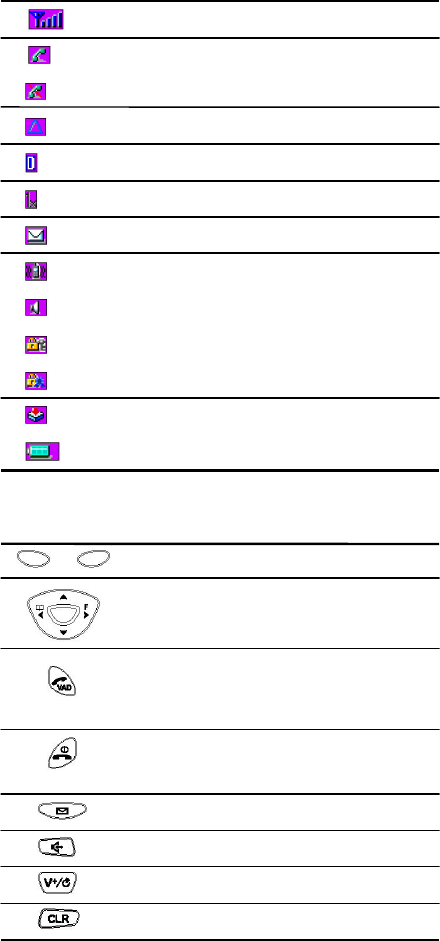Dynabook DCE46036A Tri-Mode Dual-Band Analog/PCS Phone User Manual CDM9155GPXFCC cover
Toshiba Corporation Tri-Mode Dual-Band Analog/PCS Phone CDM9155GPXFCC cover
Dynabook >
Contents
Users Manual

CDM-9500
OWNER'S MANUAL
Draft
May 2002
TABLE OF CONTENTS
SAFETY INFORMATION FOR
WIRELESS HANDHELD PHONES ...........…………........... 1
SAR INFORMATION ......................................…………....... 2
FUNCTIONS .............................................…………............. 3
GETTING STARTED ................................…………............. 5
BASIC OPERATION .......................................…………....... 6
Placing Calls .......................................………….............. 6
Receiving Calls ................................…………................. 6
OPERATING PROCEDURES ...........................…………....... 7
APPLICANT: TOSHIBA CORPORATION
TRANSCEIVER TYPE: CJ6DCE46036A
EXHIBIT Type “User Manual”

1
SAFETY INFORMATION FOR
WIRELESS HANDHELD PHONES
SAFETY INFORMATION FOR
WIRELESS HANDHELD PHONES
Read this information before using your handheld
portable Cellular Telephone.
Your wireless handheld portable telephone is a low
power radio transmitter and receiver. When it is ON, it
receives and also sends out radio frequency (RF) sig-
nals.
FCC RF EXPOSURE INFORMATION
In August 1996, the Federal Communications Commis-
sion (FCC) of the United States, with its action in Re-
port and Order FCC 96-326, adopted an updated safety
standard for human exposure to radio frequency (RF)
electromagnetic energy emitted by FCC regulated trans-
mitters. Those guidelines are consistent with the safety
standard previously set by both U.S. and international
standards bodies. The design of this phone complies
with the FCC guidelines and these international stan-
dards.
Use only the supplied or an approved antenna. Unau-
thorized antennas, damaged antennas, modifications,
or attachments could impair call quality, damage the
phone, or result in violation of FCC regulations. Please
contact your local dealer for replacement antenna.
Body-worn Operation
This device was tested for typical body-worn operations
with the BC9500 belt-clip and LB9500 holster mod-
els, offered by Audiovox as an accessory to this phone,
and found to comply with FCC RF exposure require-
ments. Third-party belt-clips, holsters and similar ac-
cessories should be avoided, as they have not been
tested and may not comply with FCC RF exposure lim-
its.
For more information about RF exposure, please visit
the FCC website at www.fcc.gov .

2
phones used by the public is 1.6 watts/kg (W/kg) averaged
over one gram of tissue. The standard incorporates a sub-
stantial margin of safety to give additional protection for the
public and to account for any variations in measurements.
SAR INFORMATION
SAR INFORMATION
THIS MODEL PHONE MEETS THE GOVERNMENT’S RE-
QUIREMENTS FOR EXPOSURE TO RADIO WAVES.
Your wireless phone is a radio transmitter and receiver. It is
designed and manufactured not to exceed the emission limits
for exposure to radiofrequency (RF) energy set by the Fed-
eral Communications Commission of the U.S. Government.
These limits are part of comprehensive guidelines and estab-
lish permitted levels of RF energy for the general population.
The guidelines are based on standards that were developed
by independent scientific organizations through periodic and
thorough evaluation of scientific studies. The standards include
a substantial safety margin designed to assure the safety of
all persons, regardless of age and health.
The exposure standard for wireless mobile phones employs a
unit of measurement known as the Specific Absorption Rate,
or SAR. The SAR limit set by the FCC is 1.6 W/kg.* Tests for
SAR are conducted with the phone transmitting at its highest
certified power level in all tested frequency bands. Although the
SAR is determined at the highest certified power level, the ac-
tual SAR level of the phone while operating can be well below
the maximum value. This is because the phone is designed to
operate at multiple power levels so as to use only the power
required to reach the network. In general, the closer you are to
a wireless base station antenna, the lower the power output.
Before a phone model is available for sale to the public, it
must be tested and certified to the FCC that it does not ex-
ceed the limit established by the government-adopted require-
ment for safe exposure. The tests are performed in positions
and locations (e.g., at the ear and worn on the body) as re-
quired by the FCC for each model. The highest SAR value for
this model phone when tested for use at the ear is 1.38 W/kg
and when worn on the body, as described in this user guide,
is 0.50 W/kg. (Body-worn measurements differ among phone
models, depending upon available accessories and FCC re-
quirements). While there may be differences between the SAR
levels of various phones and at various positions, they all meet
the government requirement for safe exposure.
The FCC has granted an Equipment Authorization for this
model phone with all reported SAR levels evaluated as in com-
pliance with the FCC RF exposure guidelines. SAR informa-
tion on this model phone is on file with the FCC and can be
found under the Display Grant section of http://www.fcc.gov/
oet/fccid after searching on FCC ID CJ6DCE46036A.
Additional information on Specific Absorption Rates (SAR) can
be found on the Cellular Telecommunications & Internet As-
sociation (CTIA) web-site at http://phonefacts.net.
*In the United States and Canada, the SAR limit for mobile

F
FU
UN
NC
CT
TI
IO
ON
NS
S
External View
3
Earphone Mic
Jack
Graphic
Display
Message
Access Key
Soft Key 2
Navigation
Key
End Key with
Power ON/OFF
Clear Key
Microphone
Power/Data
Connector
Digit Keys
Speakerphone
Voice Mail &
Next Key
Send Key &
Voice
Activated
Dialing
Soft Key 1
Earpiece

LCD Display Icon
Signal strength icon.
You are on a call.
You are out of service area.
You are in a roaming service area.
The phone operates on digital mode.
The phone operates on digital mode.
You have new messages.
Vibrating alert is active.
The phone operates on hands-free mode.
Alert from Network.
Battery level icon.
Key Functions
Soft Keys:
To enter the message menu.
To activate Speakerphone mode.
To access your Voice Mail.
To clear digits or letters.
4
Web security page.
Navigation Key:
To end a call and to turn the
phone on/off.
To place or answer a call.
Voice Activated Dialing.

5
GETTING STARTEDGETTING STARTED
Turning the Phone On/Off
Press and hold . All the indicators and the display
will light momentarily, and a tone will be heard.
To turn the phone off, press and hold .
Antenna Position
The antenna can be used in its fully extended or fully re-
tracted position only. It is recommended that the antenna
should be fully extended for optimum performance and
signal strength or while operating in poor signal areas.
Signal Strength Icon
( )
The number of lines shown by this icon indicates the
strength of the signal your phone is receiving.
The number of lines may change as you move with the
phone to represent the changing signal strength.
If the signal is not strong enough to place a call,
“” will appear on the display.
Battery Level Icon
You can always monitor the battery charge condition
with the constant battery level icon.

BASIC OPERATIONBASIC OPERATION
Placing Calls
To Place a Call
1.Enter the phone number.
2.Press
.
The icon will appear on the display.
To Terminate a Call
Press
. The icon will no longer appear in the
display.
Last Number Redial
1. Press the key under
Redial
to recall the last
number dialed.
2. Press
to place the call.
Receiving Calls
The phone sounds an alert or vibrates to alert you of
an incoming call. Also, the LED of the phone will flash.
To Receive a Call
When the telephone rings, press
to answer the call.
The icon will be displayed.
Note: To mute the ringer or stop the vibrating, press
.
Caller ID with Name
This feature allows you to preview in your display the
number and name of the party calling you before you
answer the call.
6

7
OPERATING PROCEDURESOPERATING PROCEDURES
Never violate any of the following Rules and Regula-
tions of the FCC when using your Cellular Phone. Such
violations are punishable by fine, imprisonment or both.
• Never use obscene, indecent, or profane lan-
guage.
• Never use your Cellular Phone to send false dis-
tress calls.
• Never wiretap or otherwise intercept a phone call,
unless you have first obtained the consent of the
parties participating in the call.
• Never make any anonymous calls to annoy, ha-
rass, or molest other people.
• Never charge another account without authoriza-
tion, to avoid payment for service.
• Never willfully or maliciously interfere with any
other radio communications.
• Never refuse to yield the line when informed that
it is needed for an Emergency Call. Also, never
take over a line by stating falsely that it is needed
for an emergency.